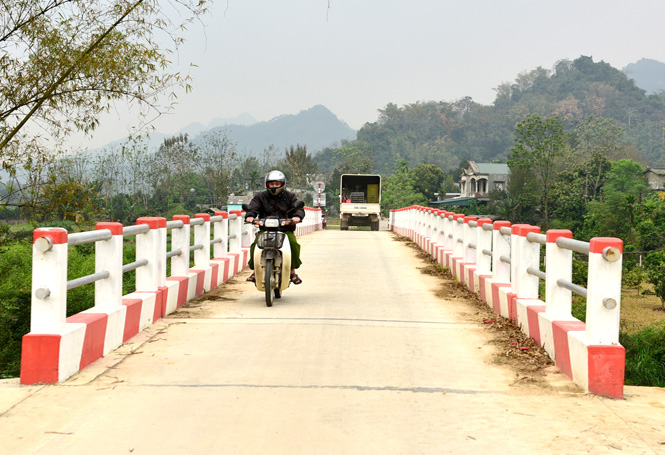The bridge holds great significance to inter-commune and inter-district residential areas. Having gone through historical ups and downs, last year, the DRVN decided to rebuild Soi Sinh into a durable bridge.
Since the new bridge was put into use, the life of the people in Tan Long’s hamlet 9 and hamlet 10 has transformed significantly. The spirit of new rural development is now surging in each household’s ways of thinking and acting.

Since being put into use, Soi Sinh bridge has helped to facilitate travel and trade in the locality.
Hamlet 10 has a total of 117 households, most of whom grow mulberry to raise silkworms. On average, 360 square metres of mulberry generate an annual income of VND5 million (US$214.89). The hamlet’s mulberry cultivation acreage has constantly expanded to seven hectares, with many households having more than one hectare of mulberry.
With fertile land and abundant sources of raw green food, local residents in hamlet 10 currently raise 147 cows in total. The trend toward raising beef cattle and calving cows has been growing quite strongly there.
On the other side of Soi Sinh bridge lies hamlet 9 with its 103 households. Pham Van Hao, head of the hamlet, is a “locomotive” in the locality’s economic development. Hao’s family now has 200 grapefruit trees in harvest time. To take advantage of the grapefruit flower source, he has been raising 60 colonies of honey bees.
Thanks to the solid Soi Sinh bridge, the people in hamlets 9 and 10 no longer have to worry about transportation issues as they did previously. Together with the State’s investment in rural infrastructure construction, people in the Soi Sinh region have been working hard and creatively to rise above any difficulties. To date, the hamlets have made great efforts to help Tan Long commune meet 14 out of 19 criteria towards completely fulfilling the tasks of new rural development in the near future.

Comment
Print